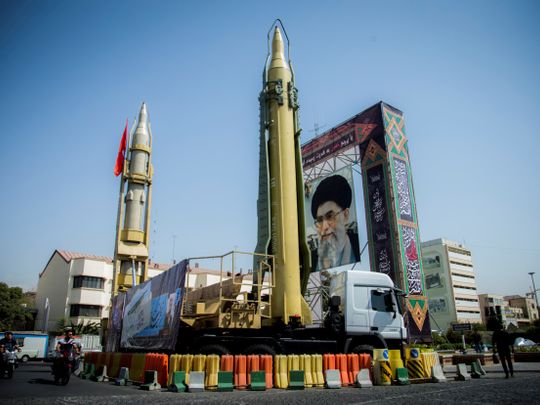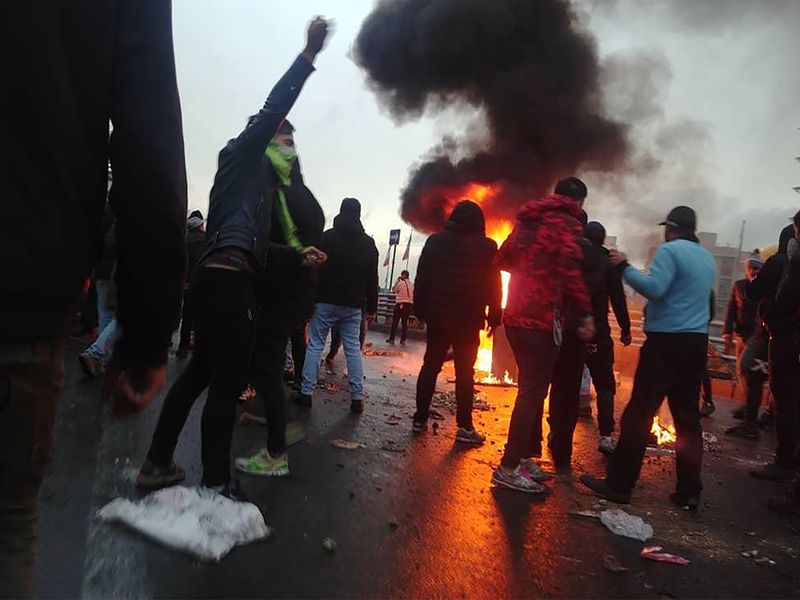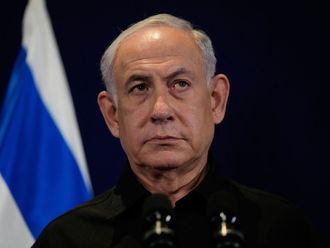
Washington: In a rare rebuke of Iran after more than a year of trying to bridge the divisions between Washington and Tehran, three European powers accused Iran of testing ballistic missiles intended to avoid missile defenses in violation of United Nations resolutions that urge Iran not to develop “nuclear capable” systems.
The action came hours before Brian H. Hook, the State Department’s special representative for Iran, accused Iranian security forces of killing around 1,000 people since the protests over high gasoline prices swept more than 160 Iranian cities and towns starting in the middle of November.
Hook did not provide a source for the figures, which closely parallel those of the Mujahedeen Khalq, or MEK, a dissident group that frequently raises the alarm about actions of the Iranian government - and is often a target of the Iranian intelligence agencies and military.
“As the truth is trickling out of Iran, it appears the regime could have murdered over a thousand Iranian citizens since the protests began,” Hook said Thursday during a State Department briefing.

He also described a seizure, by the U.S. Navy, of a boatload of missile parts that appeared to be of Iranian origin.
They appeared to be headed to Yemen, where Iran backs the Houthi rebels, and Hook said they “comprise the most sophisticated weapons seized by the U.S. Navy to date during the Yemen conflict.”
Three-page letter
But it was Tehran’s testing of much larger missiles, capable of reaching Israel and perhaps the edge of Western Europe, that resulted in a three-page letter sent by Britain, France and Germany - the three European nations that joined in the negotiations over the 2015 nuclear accord led by the Obama administration - that could be a turning point in relations between the West and Iran.
All three countries opposed President Donald Trump’s decision in mid-2018 to withdraw from the agreement, which sharply limited Iran’s nuclear abilities for at least 15 years.
They struggled to come up with ways to compensate Iran for revenues lost because of U.S.-led sanctions, an effort that has largely collapsed.
More often than not, the European governments have been critical of Washington’s moves and have accused the White House of provoking Iran’s decision to slowly restart its nuclear enrichment facilities.
The Obama-era agreement does not cover missiles.
But a U.N. resolution passed right after the agreement was reached in Vienna in 2015 stipulates that “Iran is called upon not to undertake any activity related to ballistic missiles designed to be capable of delivering nuclear weapons” until eight years after the agreement is adopted.
The letter noted that the test launches included a new version of the Shahab-3 medium-range missile - a staple of the Iranian arsenal - that appeared to have a maneuverable reentry vehicle, a way of defeating traditional missile defenses.
Iran has said that it is not designing a “nuclear capable” missile because it has no intention of building nuclear weapons.
Iran’s ambassador to the U.N., Majid Takht Ravanchi, issued a lengthy rebuttal to the European claims, saying they were “politically motivated.”
But they also marked an edging of the European powers back into the American-led camp, U.S. officials noted.
Deadliest crackdown in Islamic Republic's history
Hook was correct in saying that the November uprising in Iran was the deadliest in the 40-year history of the Islamic Republic.
As people took to the streets across the country, security forces opened fire at mostly unarmed protesters.
The government has not released official numbers of the dead, but rights organizations like Amnesty International as well as local journalists and Iran’s Green Movement opposition estimate 208 to 450 people have been killed, less than half the number Hook claimed.
About 2,000 have been injured and 7,000 arrested, the groups have estimated.








